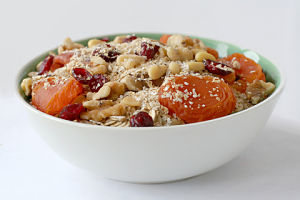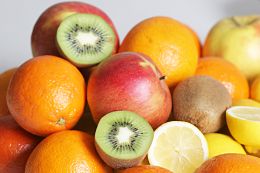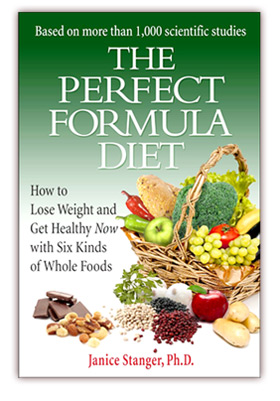Useful News from the Vital Signs Workshop
Five pioneering researchers with one critical message shared their knowledge at the Vital Signs workshop on April 10, 2010. This event, put together by the awesome nonprofit Physicians Committee for Responsible Medicine (PCRM) was packed with compelling new information in nutrition and health.

A food as simple and tasty as oatmeal with fruit, nuts, and dairy-free milk will set you strong on the road to health
Here are highlights of five useful tips from each of the five presenters. If you missed the workshop and want to learn more, PCRM has generously posted the slides.
Lawrence H. Kushi, Sc.D. summarized the findings of thousands of studies.
1. The American Cancer Society emphasizes whole plant foods (including five or more servings daily of fruits and vegetables), exercise, and a healthy weight to prevent cancer.
2. The World Cancer Research Fund/American Institute for Cancer Research report reinforces the importance of a varied whole foods, plant-based diet, physical activity, and lean weight in preventing and fighting cancer.
3. This report also recommends avoiding red meat, processed meat, alcohol, and salty foods.
4. Eating lots of fruits, vegetables, and whole grains helps prevent obesity and weight gain.
5. It’s silly to put meat and beans in the same food group. You are best off just eating the beans. We (more…)















